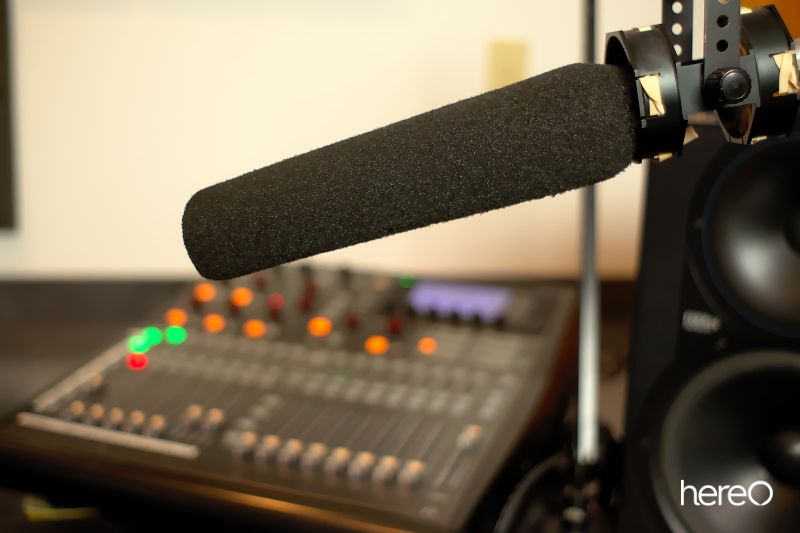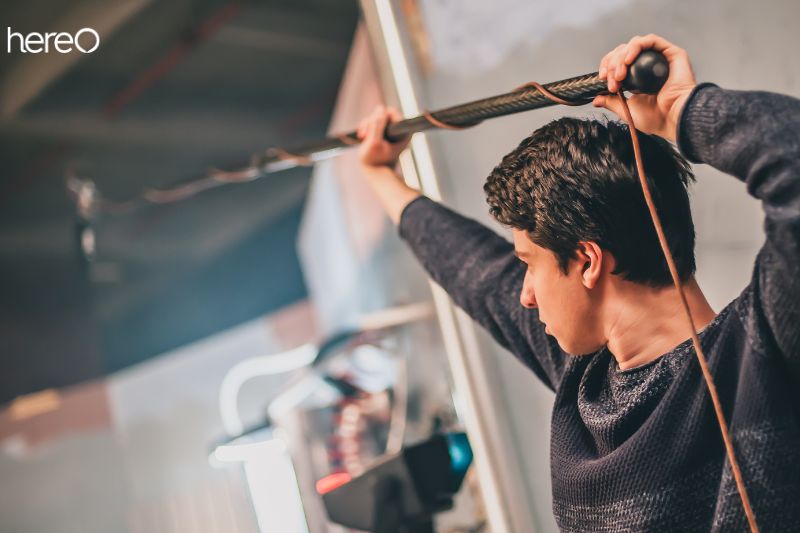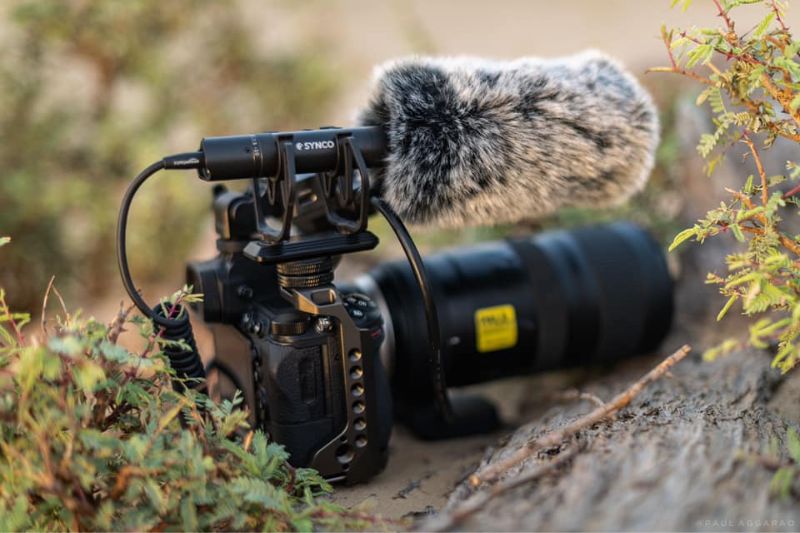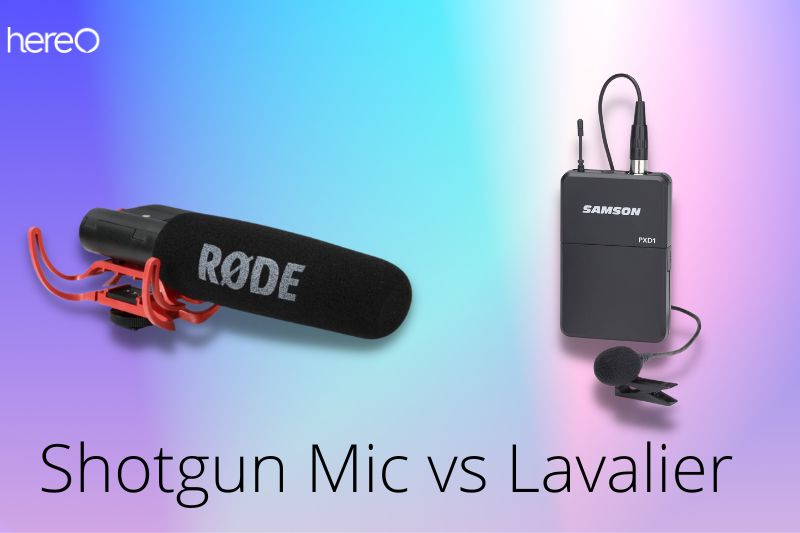Whether you’re doing an off-camera interview, shooting a live video commercial, or recording sound for a movie, gathering audio on location can provide unique obstacles.
Naturally, you’ll want to get the finest sound possible, and lavalier microphones and shotgun microphones are both classic choices for video and location recording. Each has advantages and disadvantages, so let’s look at shotgun mic vs lavalier.
Contents
The Lavalier Microphone

What is Lavalier
Lavaliers are compact, clip-on microphones that are commonly used in live performances and interviews. They are designed to be fastened to clothing, generally near the collarbone, and are sometimes known as “lavs” or “lapel mics.”
Because they enable for hands-free use, lav mics allow the speaker or performer to shine and really make their voices heard. Furthermore, lavs can be readily hidden from view, giving a more natural, clean, and professional appearance.
Wired lavalier microphones are less expensive and produce somewhat higher quality sound. They are not battery powered, which makes them extremely convenient, with the sole negative being that they restrict users’ movement.
If you plan to walk around a lot while recording, keep an eye on the wires that may be connecting your wired lav microphone to the power source.
Wireless lavalier microphones use Bluetooth or infrared technologies to transmit audio signals wirelessly. This frees up the speaker or performer from being linked to a cord.
Many artists and presenters rely on lapel microphones, and the popularity of wireless microphones is expanding. Clip-on microphones are popular in a variety of venues, including broadcast television, public speaking, and theater.
The Pros of Lavalier Microphones
A key rationale for employing lavalier microphones is to get the microphone as close to the source of the audio as possible, in this case by physically connecting it to the person speaking.
In addition to capturing clean audio from close range, lavaliers tend to decrease wind noise, which is a major issue with many on-camera style microphones.
Because lavalier microphones are small, they can easily be attached to a necktie, scarf, collar, or shirtfront. Because the pick-up pattern is typically broad, precision pointing is not required.
Using a lavalier for self-shot video projects allows you to point the camera wherever while still picking up your speech cleanly and clearly. Placing a lavalier on each speaking topic produces extremely clean sound when recording groups of people.
The Cons of Lavalier Microphones
The biggest drawback of lavalier microphones is that they can be prone to background noise, as they are often placed close to the body. This can be a major issue if you are recording in a noisy environment, as the microphone can pick up too much ambient sound.
Lav mics can also record noise if they are improperly placed and rub against clothing or cables.
Because each individual speaking will need their own microphone, recording audio from numerous persons at once will necessitate the purchase of multiple lavalier mics.
The Shotgun Microphone

What is Shotgun Microphone
Shotgun microphones are directional, picking up sound that is immediately in front of them while minimizing noise from other directions. Because of their extreme sensitivity, these microphones are sometimes referred to as interference-type line microphones.
As a result, in order to record the sound, you must point the microphone at the source. This allows you to concentrate on what you’re saying without worrying about the microphone picking up any background noises.
How Far Can Shotgun Mics Reach?
A shotgun microphone is substantially longer than a standard microphone. This is why they are reassembled as shotguns. When selecting a microphone, the most crucial element to consider is its practical range. A shotgun mic’s pickup range is typically four to ten feet.
In general, a medium shotgun is enough for booming and picking up voices. Although a small shotgun microphone is less directional than its longer counterparts, it nevertheless rejects off-axis high frequencies better than a hyper-cardioid microphone.
Longer tubes reject more off-axis sound, but their length makes them more difficult to deal with. Because moving the microphone even slightly off-axis results in sound source attenuation, this microphone is very sensitive to location and requires a fixed mic/source or a trained boom operator.
This is frequently the best solution in noisy circumstances.
The Pros of Shotgun Microphones
A significant advantage of employing a high-quality shotgun mic for spoken voice video recording is that it may be mounted directly to your camera. Many better shotgun mics can also be mounted on a boom, and I’ll give some advice on that as well.
So, in terms of ease of use, a camera-mounted shotgun mic is simple and can be handled by the cinematographer, making this type of microphone ideal for one-man operations.
Most shotgun microphones have a well-defined pickup or sensitivity area. It is the pattern that is mentioned in advertising or spec sheets. A reasonably precise and limited area pattern of what the mic will hear works with you mounting on camera in that you point at your subject just like you do with the lens.
Another advantage of shotgun mics is that they can be mounted on a boom. This allows you to get very close to the person speaking, which, when combined with the constrained pattern, results in very high quality audio.
The cons of shotgun microphones
Although the narrow pickup pattern is effective at reducing unwanted noise, it will not function like a telephoto zoom lens. In other words, if the person is far enough away from the camera, a shotgun mic may not capture enough audio. A shotgun mic cannot “zoom in” on the sound; a specialized parabolic mic is required.
Another disadvantage of shotgun microphones is that mounting one on a boom to physically go closer to the subject requires the assistance of another person or the use of an additional mount.
Shotgun Mic vs Lavalier

When used correctly, both shotgun mics and lavaliers (lapel mics) may capture high-quality audio. They’re ideal for interviews, vlogging, and conversation. Because lavalier microphones are clipped to the subject, even omnidirectional models can deliver a good signal-to-noise ratio.
A wired lavalier microphone can be inserted into a 3.5mm connector and recorded straight to the video file. Wireless lavalier mics require a transmitter, which can be plugged into 3.5mm or recorded to a separate mixer for post-production synchronization.
Despite the fact that lavaliers are useful for a variety of applications, the form aspect of a shotgun mic makes it more adaptable. Shotgun microphones can sound more natural than lavaliers. They can also be kept out of your photos without having to hide them on actors, yourself, or interviews.
Which one should you choose?

Shotgun mics are directional mics that pick up sound from a specific direction and are better suited for outdoor recording and capturing sound from a distance. They are able to pick up sound from farther away and reduce background noise, making them ideal for capturing sound from a distance.
On the other hand, lavalier mics are omnidirectional mics that capture sound from all directions and are better suited for indoor recording and capturing sound from close proximity. They provide better sound quality and can be used for more detailed recordings.
When deciding which mic to choose, it is important to consider the type of recording you will be doing and the environment you will be recording in. If you are recording outdoors, then a shotgun mic is likely your best choice. However, if you are recording indoors, then a lavalier mic is likely your best option.
FAQs about Shotgun Mic vs Lavalier

Is a shotgun mic better?
Shotgun microphones are ideal for usage at live events with a lot of ambient noise and noise from individuals around.
Shotgun mics are useful for recording someone at a noisy live event because they allow you to focus on the individual in front of the mic while not picking up on background noise.
Do shotgun mics pick up background noise?
They are intended for close-up sound sources, and they tend to pick up a lot of background noise. Using an external microphone, such as a portable, lapel (or lavalier), or shotgun mic, provides you the best signal-to-noise ratio.
Does tapping a microphone damage it?
When you tap a microphone to test it, you make a loud noise that can potentially send huge transients across the system. This can harm both the microphone and any speaker system to which it is connected.
Conclusion
No matter what kind of audio you’re recording, you’ll need to make sure you pick the right microphone for the job. Shotgun and lavalier mics both offer unique advantages and disadvantages, so it’s important to weigh your options and determine which one will best fit your needs.
If you’re unsure which to choose, consider consulting a professional audio technician for advice. With the right mic in hand, you’ll be prepared to capture great audio in any location.
Thank you for reading this article. HereOfamily hope you enjoy reading.
